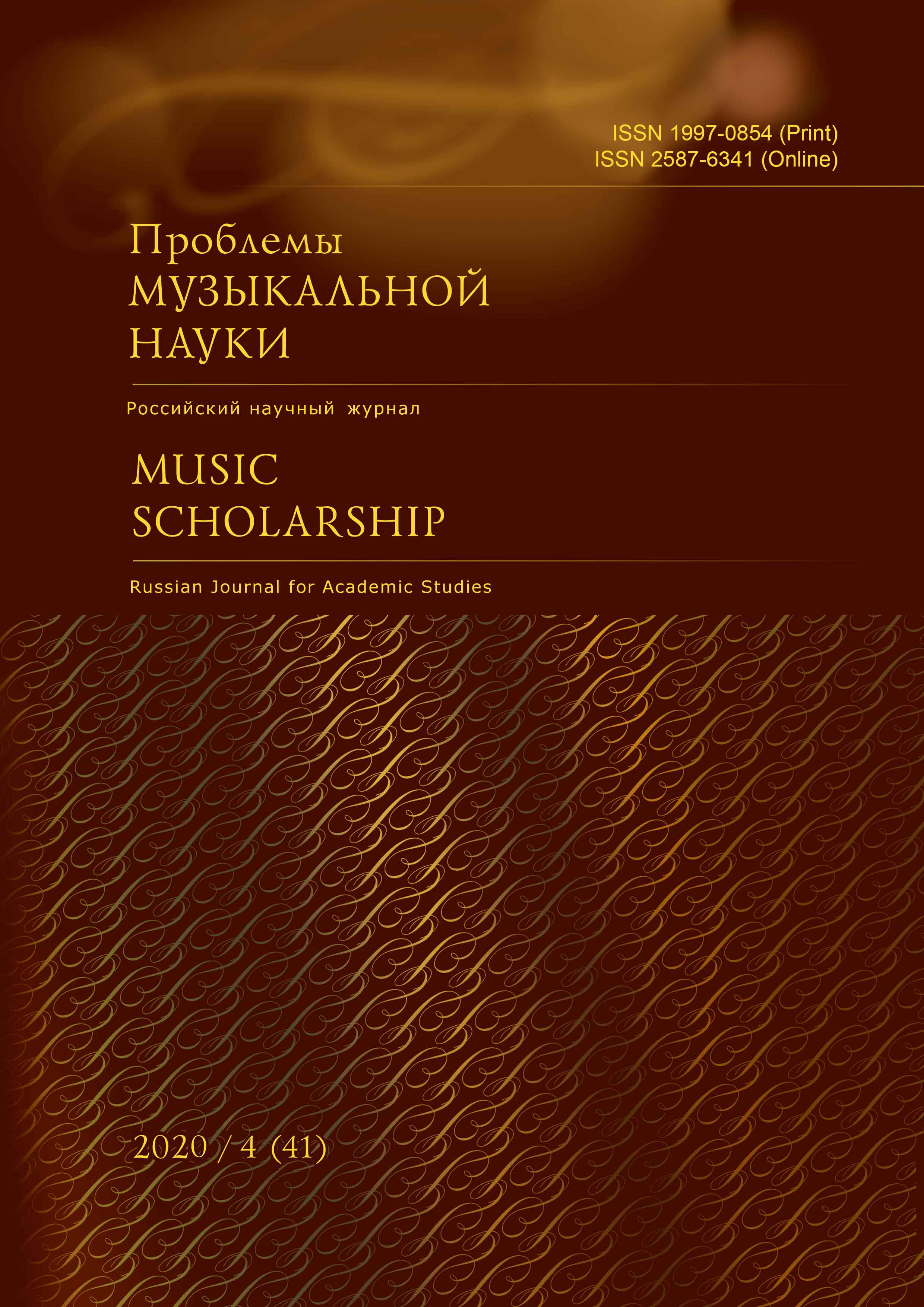Alexander Nemtin’s Concerto for Organ
Main Article Content
Abstract
Moscow-based composer Alexander Nemtin (1936–1999) is best known for his completed version of Alexander Scriabin’s “Prefatory Action,” a mystical musical composition conceived by the famous composer during the last years of his life, which was not destined to see the light of day. In 1970 Nemtin took on himself the task of recreating the “Prefatory Action,” which he completed in 1996. It is an immense musical score in three parts for orchestra, chorus, solo singers, piano and organ. Nemtin’s own musical compositions are much less known to musicians or music lovers. They are written mostly in a traditional style, with predominantly diationic harmonies, their textures follow the vein of Romantic instrumental music with a very moderate implementation of neoclassical and more modernist elements of 20th century music. Among them is a large-scale work, titled the Concerto for Organ, which was composed in 1963. This composition is for solo organ, although in the large scale of its instrumental texture and the six varied movements comprising its overall formal design, it validates its somewhat extraordinary title. The Concerto for Organ is characterized by extended diatonic harmonies complemented with a large number of dissonant sonorities. It contains a dialogue with the Baroque style and elements of stylization in the vein of Bach and other Baroque composers. Stylization in the Concerto for Organ is expressed most visibly by its adherence to the genres of the Baroque period – preludes, canons, chorales, arias, ricercars and fugues. Nemtin’s Concerto follows an extended tradition of lengthy and massive works for solo organ and organ with orchestra. Its academic formal qualities, broad use of contrapuntal techniques and adherence to well-known Baroque genres makes it aesthetically closer to the German organ tradition. In his instrumental composition of a large-scale genre Alexander Nemtin demonstrated himself as a master of large-scale form capable of thinking in categories of massive dramaturgy and philosophic thought. He has established his place in music history not only be creating the completed version of Scriabin’s “Prefatory Action,” but also with his own musical compositions which continue the tradition of orchestral, vocal and chamber instrumental music by 20th century Russian composers.
Keywords: Alexander Nemtin, Concerto for Organ, organ music, large-scale form, prelude, canon, aria, fugue, stylization, stylistic dialogue with the Baroque period.
Article Details

This work is licensed under a Creative Commons Attribution-NonCommercial-NoDerivatives 4.0 International License.
Copyright
The rights on the results of intellectual activity and equated means of individualization are protected in accordance with Part IV of the Civil Code of the Russian Federation. The authorship, author's name, executor’s name, inviolability of the work and result of execution are protected by the rules of Part IV of the Civil Code of the Russian Federation of the author or executor, regardless of providing legal protection of such results of intellectual activity at the time of their forming.
Copyright laws regulate the civil legal relations for using works of science, literature and art. Such relationships are formed as the result of the author’s writing his or her texts. In this case the author can rightfully claim copyright of the work.
The author has certain rights to reuse the work (see: “Ethical Aspects in Terms of Multifold Publications).
Licenses
All copyrights on the articles belong to their authors. The author transfers the rights on using the article the publisher.
PDF versions of scholarly articles of the journal PMN are published by using the license Attribution Non-Commercial No Derivatives cc by-nc-nd, allowing loading and distributing works on the assumption of indicating the authorship. The works may not be changed in any way or used for commercial interests.
Criteria for Authorship, Co-authorship
The term “author” refers to all persons (co-authors) who have made a substantial contribution to conducting the research and creation of the manuscript and responsible for its content. The person (author) who has submitted the manuscript to the editorial board shall bear responsibility for the complete list of the group of authors and the changes made to the manuscript in accordance with the results of the peer reviewing and editing.
1. Authorship is based on the following criteria:
1) The author made a substantial contribution to the research activity and development of concept, collected the data, made analysis and interpretation of the data.
2) The author carried out the writing of the text of draft articles and edited it attentively and substantially.
3) The author approved the final version of the article prior to its submission.
4) The author bears responsibility for the integrity of all parts of the manuscript.
2. The authors shall guarantee that the submitted manuscript is the original work.
3. Scholarly reviews for some issue or other should be objective, present material in a wide range and at the same time take into account the views of the author of the review.
4. The authorship of scholarly publications is obligated to reflect accurately the contribution of individuals to the research activity, with specific information about the authors.
5. The authors may not mislead the readers by publishing acknowledgements of gratitude to people who were not actually involved in writing the work. Other persons who made contribution to the work, but are nevertheless not the authors, may be listed in the rubric of “Acknowledgements,” with indications of the type and extent of their activities.
6. Authors are obligated to provide a description of their contribution to the publication.
7. The order of authorship must be a joint resolution of co-authors. The authors should be ready to explain the order of their enumeration and listing.
8. The authors shall be entirely responsible for the correct definition of authorship acting in accordance with the rules adopted in their institution.
9. Investigators must ensure that only those persons who meet the criteria for authorship (that made a significant contribution to the work), shall be considered the authors, and the researchers who do not merit authorship will be excluded from the list of authors.

